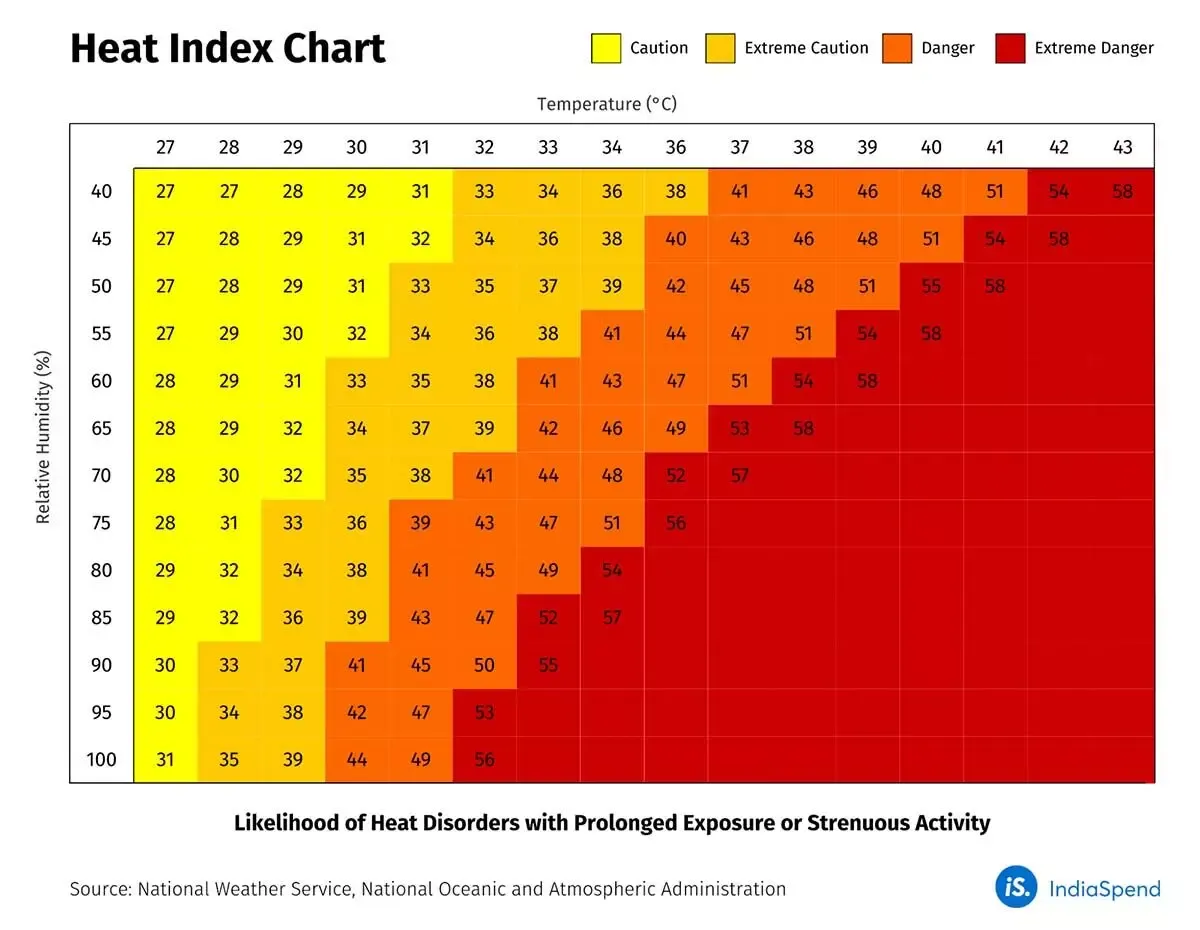Understanding the Heat Index
The heat index is more than just a number; it’s a combination of air temperature and relative humidity that indicates how hot it actually feels. With advancements in urbanization and ongoing climate change, particularly in Tamil Nadu, assessing heat stress has become increasingly crucial. When the heat index rises to uncomfortable levels, it can lead to severe health risks such as heat exhaustion and heat stroke, making it imperative to understand how these conditions can affect the population.
Hotspots of Concern
Recent studies have pointed out areas in Tamil Nadu, specifically Sriperumbudur and Oragadam, as critical heat hotspots. This alarming trend reflects a broader issue of environmental degradation and urban heat islands, where cities become significantly warmer than their rural surroundings due to human activities.
Sriperumbudur and Oragadam: A Deeper Dive
Sriperumbudur, once known for its peaceful environment and green spaces, has transformed drastically in recent years due to rapid industrialization and urban sprawl. The establishment of various manufacturing units and IT parks has led to an influx of people seeking job opportunities. However, this surge comes at a cost—significant environmental degradation.
Oragadam, which is part of the greater Chennai metropolitan area, has also seen similar developments. As one of the major industrial hubs, it contributes to increased vehicular emissions, extensive construction practices, and a depletion of green cover—all of which exacerbate the heat index levels in the related regions.
The Role of Urbanization in Rising Heat
Urbanization tends to amplify the heat effect through various mechanisms:
- Reduced Green Space: The conversion of parks and agricultural lands into concrete structures reduces the natural cooling effects of plants and soil, leading to higher ground and air temperatures.
- Increased Emissions: The rise in vehicle usage and industrial activities is a major contributor to air pollution, which can trap heat in urban areas.
- Construction Practices: Going hand in hand with urban sprawl, construction activities generate substantial waste heat and further eliminate the natural cooling solutions that trees and vegetation provide.
The Impact on Local Communities
The implications of this rising heat and related urbanization on communities are dire. Vulnerable populations, particularly the elderly and those with pre-existing health conditions, are at greater risk of heat-related illnesses. The rising temperatures can lead to:
- Increased Health Risks: High heat stress levels can lead to dehydration, heat exhaustion, and more severe conditions such as heat stroke.
- Economic Strain: With the rise in health-related issues, families and communities may face increased medical costs, leading to economic disadvantages.
- Reduction in Productivity: Heat affects not just outdoor workers but also those in indoor environments where cooling systems may not be adequately managed, leading to decreased productivity.
Impact of Climate Change on Hill Stations
The phenomenon of rising temperatures in Tamil Nadu extends beyond the plains into its hill stations. Areas that were historically cooler climates are now experiencing unsettling warming trends. The surge in construction and population density, paired with a decline in forest cover, has rendered these regions vulnerable to climate change-induced impacts.
Hill stations like Ooty and Kodaikanal, once cherished for their temperate climates, are witnessing climate transformations that could threaten their very essence. With the ongoing construction boom, these areas are losing their unique biodiversity and traditional climate moderation.
Environmental Consequences
The warming of hill stations poses several threats:
- Biodiversity Loss: Plant and animal species adapted to cooler climates may face extinction or migration, leading to reduced biodiversity.
- Water Scarcity: The forests in these regions play a crucial role in water regulation. A decline in forest cover jeopardizes the groundwater recharge capacity.
- Tourism Challenges: As these areas warm up, their attractiveness as cool retreats diminishes, posing risks to local economies reliant on tourism.
Counteracting Heat Stress: Mitigation Strategies
To tackle the issue of rising heat indices and its implications in Tamil Nadu, practical measures need to be implemented at various levels, from grassroots movements to governmental policies:
- Urban Planning: Smart urban designs that prioritize green spaces, parks, and sustainable construction can alleviate the urban heat island effect significantly.
- Tree Planting Initiatives: Local governments and communities should engage in afforestation and reforestation projects to boost vegetation cover, aiding in natural cooling processes.
- Public Health Education: Increasing awareness of heat stress symptoms and encouraging preventative behaviors can help communities manage health risks better.
Conclusion
The heat index is a glaring reminder of the overheating occurring in Tamil Nadu, fueled by urbanization, industrial growth, and climate change. Areas like Sriperumbudur and Oragadam serve as crucibles that illustrate the strain on our environment and health. This alarming status calls for immediate and multifaceted interventions to safeguard the well-being of the population and to protect the state’s natural heritage. Without urgent attention, the vibrant cultural and natural tapestry of Tamil Nadu may be lost to rising temperatures and urban expansion.







